23 Ghost Towns in ILLINOIS (Weird, Scary, & Legendary)
Illinois may be known for its bustling cities and vibrant culture, but hidden within the state are remnants of a different time.
Ghost towns, once thriving communities that have since been abandoned and left to decay, can be found throughout Illinois.
These eerie sites offer a glimpse into the past and invite visitors to explore their mysterious history.
From coal mining towns to failed farming communities, each ghost town has its own unique story to tell.
Some were abandoned due to natural disasters or economic downturns, while others were simply left behind as residents moved on in search of better opportunities.
Despite their desolate appearance, these forgotten 23 ghost towns in Illinois still hold a certain charm and allure for those seeking their secrets.
And by the way, you may also want to check out some of the small towns in Illinois.
Ghost Towns in Northern Illinois
1. Coltonville (Founded 1837 & Railroad Bypass)
Coltonville is an abandoned village nestled in the heart of Northern Illinois.
Once a bustling town, it now remains a ghostly reminder of the past.
The town was founded in 1837 and named after its founder, Rufus Colton.
This community thrived for many years, with businesses ranging from general stores to blacksmith shops and even a post office.
However, its population began to dwindle when the railroad bypassed the town in favor of neighboring cities.
By the beginning of the 19th century, Coltonville had become a mere shadow of its former self.
Today, visitors can explore some of the remaining buildings that made up this once-vibrant community of this ghost town.
Among them is the old schoolhouse with desks and chalkboards intact, providing an eerie glimpse into what life was like over a century ago.
Location: DeKalb County, Illinois, United States
2. Millville (Abandoned Buildings & Former Prosperity)
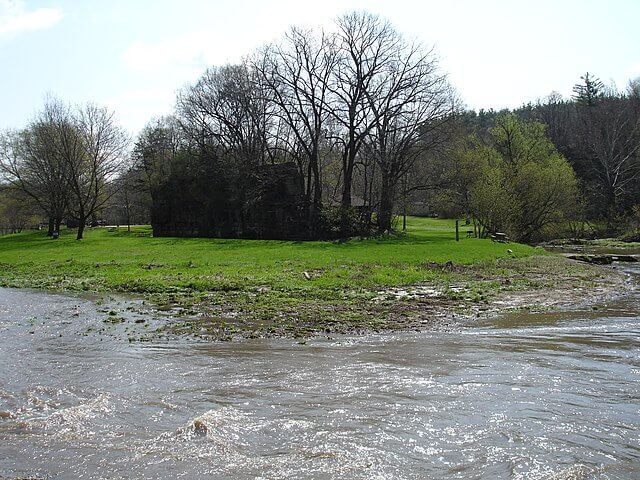
Millville, a small village in Northern Illinois, was once a bustling town with a thriving economy.
The town boasted many successful businesses, including a lumber mill and several factories.
However, the town’s prosperity ended in the mid-1900s when most of its industries shut down due to economic downturns.
Today, Millville is considered a ghost town with only a handful of inhabitants.
In the area, abandoned buildings that were once homes or shops now stand empty and forlorn.
Despite its present-day state of disrepair and neglect, Millville still holds on to some elements of its former glory – historical landmarks such as old churches and schools can still be seen today.
Visitors who venture into Millville will feel like they have stepped back in time as they explore this quiet and eerie place.
Location: Jo Daviess County, Illinois, United States
Also see our article on Haunted Houses in Illinois.
Ghost Towns in Central Illinois
1. Anderson (Once Thriving & Rural Illinois)
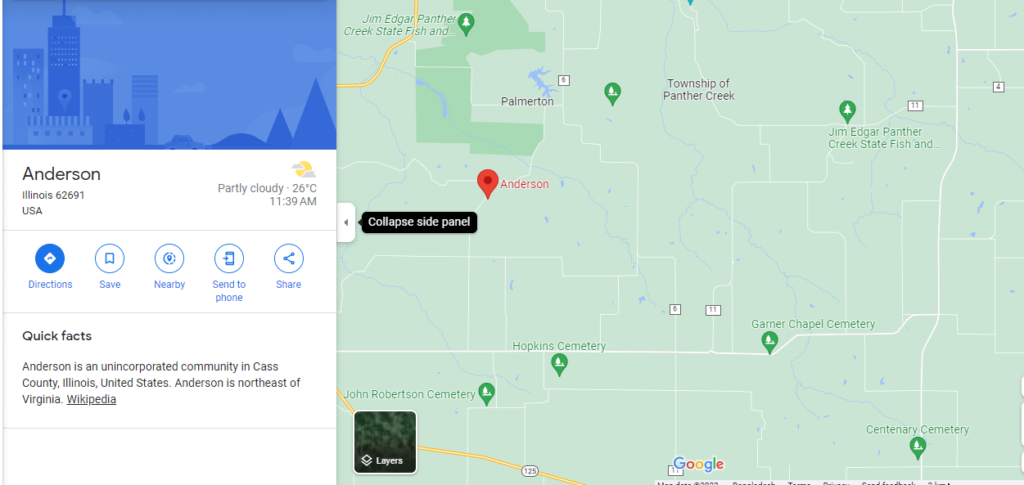
Anderson ghost town is a relic of Central Illinois’ past, serving as a testament to the region’s rich history.
Located just outside Astoria, this abandoned settlement was once a thriving community that attracted people from all over the state in search of opportunity and prosperity.
However, as time passed and economic conditions changed, Anderson slowly faded into obscurity.
Today, visitors can explore what remains of this once-thriving town and get a glimpse into life in rural Illinois during the late 19th century.
The crumbling buildings and dusty streets are haunting reminders of what used to be, giving visitors an eerie sense of nostalgia for a time long gone.
Despite its decayed appearance, Anderson still retains an undeniable charm that draws travelers across the country.
For those interested in history or urban exploration, Anderson, the ghost town, is an unmissable destination.
Location: Cass County, Illinois, United States
2. Barr (Economic Struggles & Decline Rapidly)
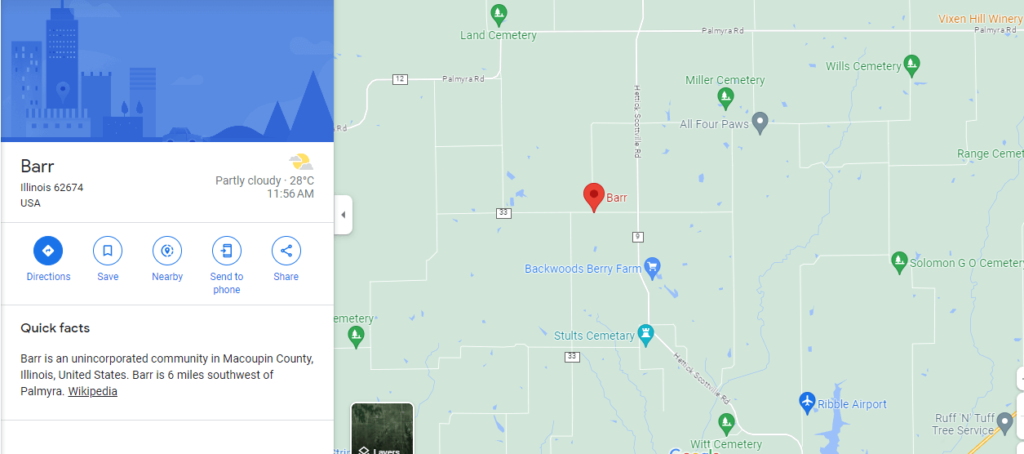
Barr is a little-known ghost town located in Central Illinois.
It was founded in the mid-1800s and was once a thriving community with several businesses, including a general store, post office, and hotel.
The town’s population grew steadily until the early 1900s when it began to decline rapidly due to economic struggles and the advent of better transportation options.
Once a bustling community, it now lies abandoned and forgotten, with only a handful of ruins left to tell its story.
Visitors can explore the remains of old buildings and homes that were once bustling with activity but now stand empty and abandoned.
The streets that were once filled with people are now eerily quiet, making it easy to imagine what life might have been like for those who called this place home.
Location: Sangamon County, Illinois, United States
3. Benjaminville (Prosperity Decline & Early 1900s)
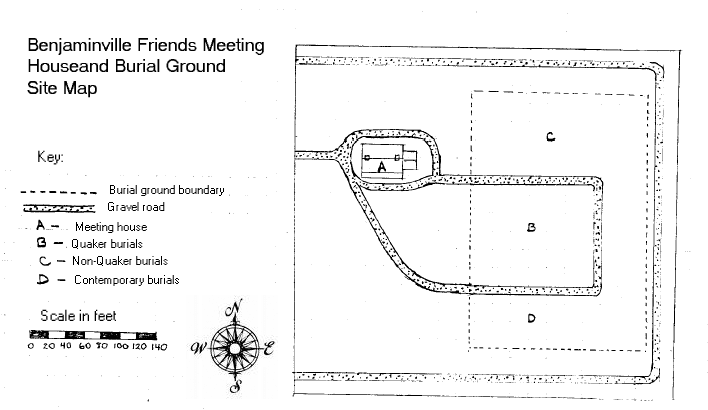
Benjaminville is a ghost town located in central Illinois that was once a bustling community.
In the mid-1800s, Quaker farmers flocked to this area to establish their homes and farming.
The town grew quickly, with several schools, churches, and stores being built over the years.
However, as time passed, economic changes started to impact the town’s prosperity.
The decline of agriculture and the rise of industrialization led many residents to leave Benjaminville in search of better opportunities elsewhere.
By the early 1900s, the once-thriving community had become a relic of its former self.
Nowadays, visitors can explore Benjaminville’s history by visiting its few remaining structures, such as the old farming houses and a cemetery.
While it may be a ghost town now, there is still plenty to see for those interested in exploring Illinois’ past.
Location: McLean County, Illinois, United States
4. Cardiff (Struggles for Employment)
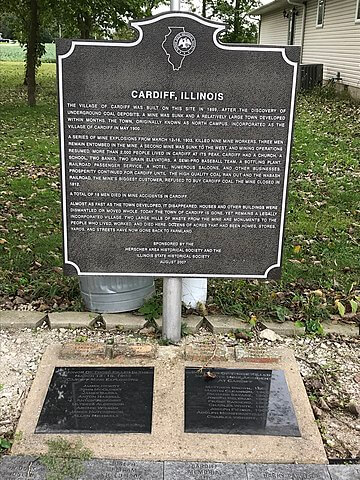
Cardiff was founded in 1899 as a coal mining town.
Anyway, today, it has become nothing more than a ghost town.
Once filled with miners and their families, the streets are now silent and deserted, with only a few run-down buildings still standing as reminders of the town’s past glory.
The decline of Cardiff began in the early 1900s when demand for coal started to decrease, and many mines were forced to shut down due to safety concerns.
Local government has also struggled to attract new businesses to the area, resulting in decreased employment opportunities for its residents.
As a result, many miners were left without work and began leaving the town searching for employment elsewhere.
Those who stayed behind struggled to make ends meet as businesses closed one by one.
At present, only a handful of residents still call Cardiff home.
Location: Livingston County, Illinois, United States
5. Clayville (Declined in Mid-1900s)

Clayville, located in the heart of the Midwest, is a ghost town with a rich and fascinating history.
Once a bustling community during the mid-19th century, it was home to a variety of businesses, such as blacksmith shops, general stores, and hotels.
However, as time passed and industries changed, Clayville slowly declined until it was abandoned in the mid-1900s.
The most prominent feature is the Clayville Historic Site which offers guided tours through several restored buildings, including a schoolhouse, blacksmith shop, and general store.
Visitors can also take a stroll through the wildflower garden or have a picnic on the grounds.
As you wander through Clayville’s quiet streets, you can’t help but imagine what life was like for those who lived here over a century ago.
While Clayville may no longer be a thriving community with inhabitants going about their daily lives, it remains an important part of Illinois’ history.
Location: Sangamon County, Illinois, United States
6. Hagaman (Still Standing Structures)
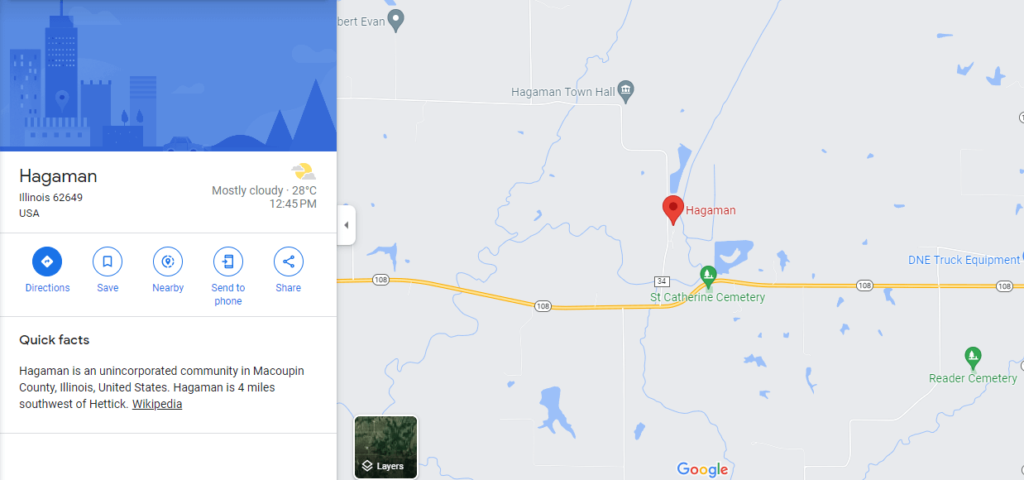
Hagaman is a ghost town located in Macoupin County.
The town is situated 4 miles (6.4 km) to the southwest of Hettick.
This small village was once home to many families and businesses, but now it sits abandoned and forgotten.
The town’s history dates back to the mid-1800s, founded by pioneers looking for new opportunities.
Hagaman’s rich history can still be seen today through its abandoned buildings and remnants of the past.
Many structures are still standing to recall the memories of the generations.
Walking through this ghost town is like stepping back to when life was simpler.
Despite its current state of abandonment, residents who once lived there have fond memories of their time in Hagaman.
So many families spent generations calling this small village home and cherishing the memories they made there.
Location: Macoupin County, Illinois, United States
7. Sugarville (Residents’ Struggles)
Hidden away in the heart of central Illinois lies a forgotten town called Sugarville.
An old general store, a blacksmith shop, and several houses once stood in this town.
Today, these are no longer in existence, and the area is nothing more than an eerie ghost town.
Once bustling with life, it is now a ghost town that time has left behind.
The remnants of its past can still be seen scattered throughout the area, from abandoned buildings to rusted machinery.
This town was established in the late 1800s, and its primary industry was coal mining.
However, by the mid-1900s, things began to change drastically for this little community.
The coal mines began closing down due to various reasons, including increased competition from other industries, which led to widespread unemployment among residents.
In response, residents started to move to other cities to earn their livelihoods, and Sugarville gradually became a ghost town.
Location: Fulton County, Illinois, United States
8. Tuscumbia (Prosperity Short-Lived)
Tuscumbia, a ghost town in Central Illinois, was once a bustling community that stood out for its magnificent architecture and lively atmosphere.
It was a paper town in Bernadotte Township, Fulton County, Illinois.
The town was named after Cherokee Chief Tashka Ambi and related to the memory of Abraham Lincoln.
There were 54 lots in the subdivision, platted by Wade Hampton on March 2, 1837.
Despite its initial success, Tuscumbia’s prosperity was short-lived.
By 1855, the schoolhouse and post office had been abandoned.
Once a thriving community of farmers and traders, Tuscumbia has now been reduced to a mere shadow of its former self.
Its abandoned buildings stand as silent witnesses to the passage of time, and its empty streets are haunted by memories of days gone by.
By the 1890s, most residents had left the town seeking better opportunities elsewhere.
Today, Tuscumbia stands as an eerie reminder of what once was.
Location: Fulton County, Illinois, United States
9. Whistleville (Hub of Activity)
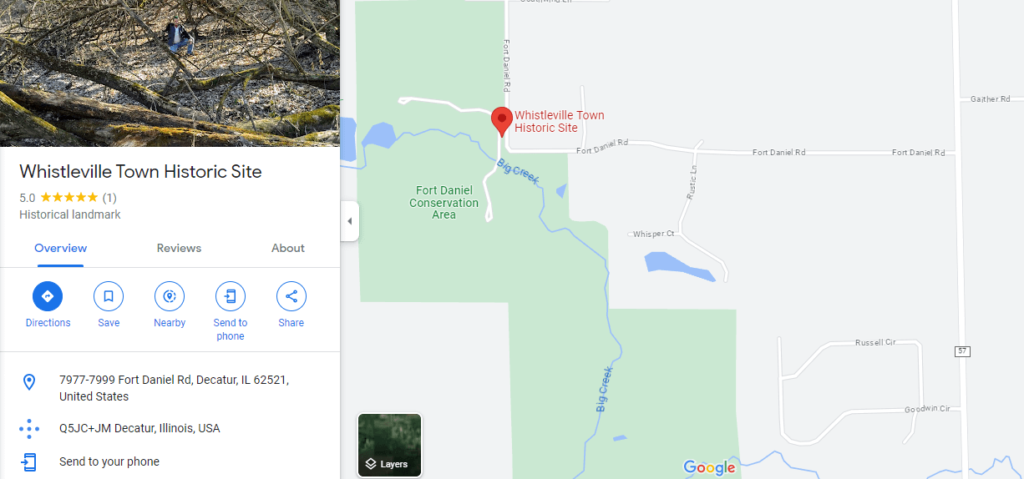
While searching for wooded areas on the open grassland, the settlers discovered mature oaks and hickories here in Whistleville.
The town soon became a stopping point for stagecoaches traveling between Central Illinois and Indiana.
Whistleville is a ghost town in Illinois that tells a story of an abandoned industrial community.
The small village was once a hub of activity, with a sawmill, grain elevator, and railroad station.
However, today it stands deserted, with only remnants of its past left to tell the tale.
Walking through Whistleville today is like taking a step back in time.
The old buildings are still standing, but they are now worn down and forgotten.
Nature has taken over the surrounding land; tall weeds and wildflowers grow between the cracked sidewalks and roads that lead nowhere.
It’s hard not to feel a sense of melancholy as you wander around this abandoned place.
Location: Macon County, Illinois, United States
Also see our article on Attractions in Illinois.
Ghost Towns in Southern Illinois
1. Bethel (Early 1800s Thriving)
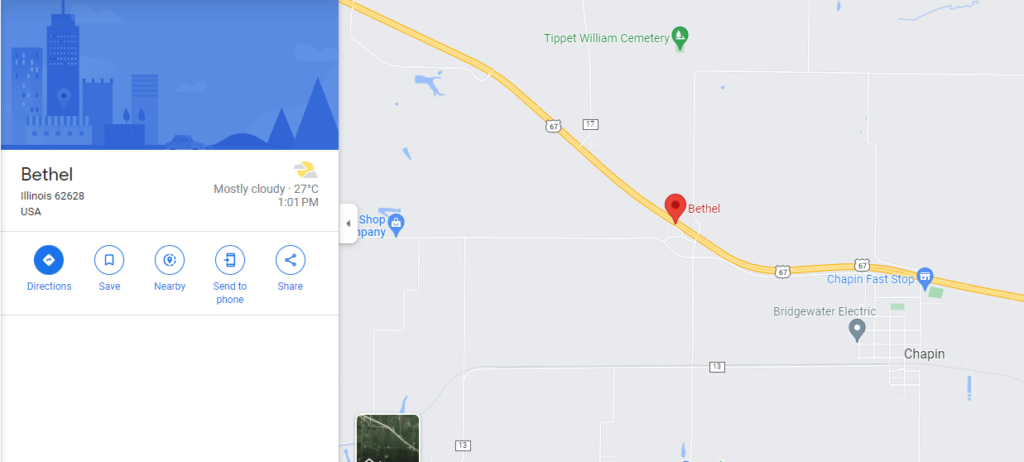
Bethel, a small ghost town located in southeastern Illinois, is a hauntingly beautiful reminder of the state’s past.
Once home to a thriving community of farmers and merchants, Bethel now stands as an eerie testament to the town that once was.
The abandoned buildings and overgrown streets paint a vivid picture of what life may have been like for those who called this place home.
Despite its current state, Bethel has a rich history worth exploring.
Founded in the early 1800s by pioneers seeking new opportunities in the vast Illinois wilderness, the town quickly grew into a bustling hub of commerce and social activity.
However, as time passed and industry shifted away from agriculture, Bethel began to decline.
By the mid-20th century, most residents had moved on to larger towns and cities in search of work.
Location: Clay County, Illinois, United States
2. Cairo (Post-Civil War Decline)
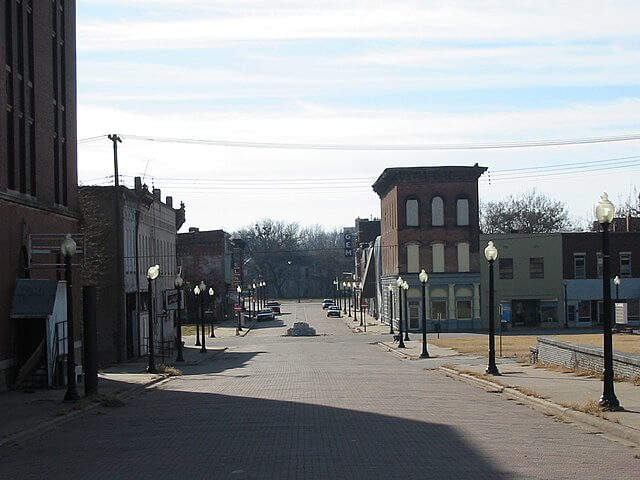
Cairo, a historic town in southern Illinois, has been referred to as a “ghost town” due to its dwindling population and abandoned buildings.
Once a bustling city with over 15,000 residents, Cairo is now home to less than 2,000 people.
The town’s decline can be traced back to several factors including racial tensions and economic struggles.
In the late 1800s and early 1900s, Cairo was a major commercial hub due to its strategic location at the confluence of the Ohio and Mississippi rivers.
However, after the Civil War, tensions between white and black residents escalated and led to violent riots in the town.
This drove many African Americans out of Cairo, devastatingly affecting businesses that relied on their patronage.
The decline of industry in southern Illinois also played a significant role in Cairo’s downfall.
Location: Alexander County, Illinois, United States
3. Kaskaskia (Floods & Haunted Places)
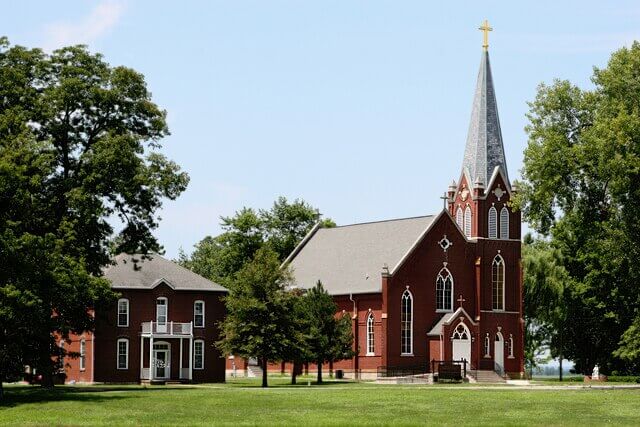
Kaskaskia, once a bustling Illinois town, is now abandoned and forgotten.
Located along the Mississippi River, Kaskaskia’s population dwindled until it became a ghost town.
It is now known as one of Illinois’ most haunted places.
The history of Kaskaskia dates back to the 1700s when French settlers founded the town.
It was once the capital of Illinois before being moved to Vandalia in 1819.
The town was destroyed by floods multiple times, which resulted in its decline and eventual abandonment.
Today, visitors can still see remnants of Kaskaskia’s past, such as the Immaculate Conception Catholic Church, which dates back to the 1800s and is one of only two remaining buildings in the town.
The church remains an important landmark for those who believe in ghosts since many claims to have seen apparitions within its walls.
Location: Randolph County, Illinois, United States
4. Parker City (Established Early 1800s)
Parker City is a small town located in the southern part of Illinois that has been abandoned for many years.
Once a thriving community, Parker City now stands as a ghost town with only remnants of its former glory remaining.
Established in the early 1800s, Parker City was once known for its bustling economy and vibrant social scene.
Two hotels, two shops, a post office, dining areas, and restaurants were once there.
Additionally, there were also two barbershops that were always full.
Around 40 families lived in Parker City during that time.
Today, visitors can explore what remains of this once-thriving community by walking through its deserted streets and buildings.
The absence of human life gives Parker City an eerie feeling as if time stood still since it was last inhabited.
While some buildings have fallen into disrepair or collapsed entirely, others stand eerily preserved from their abandonment.
Location: Johnson County, Illinois, United States
5. Vishnu Springs (Mid-1800s Mineral Springs)
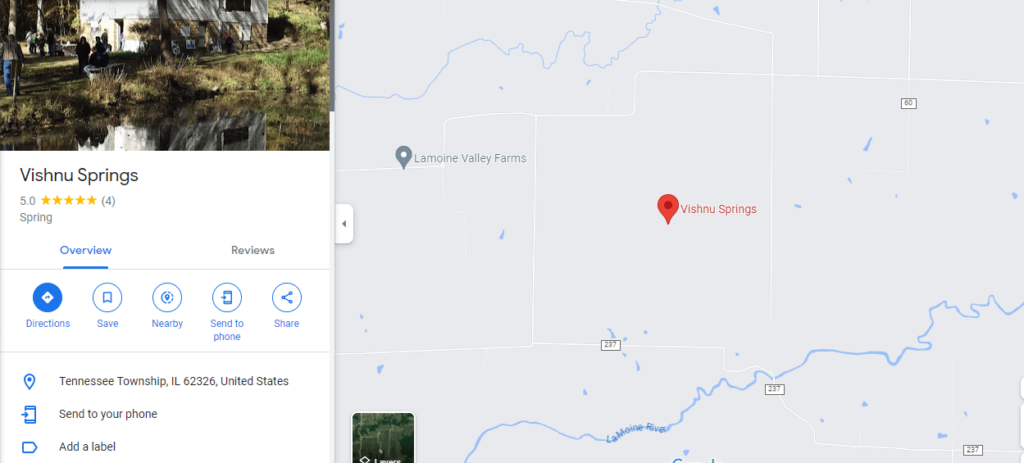
Vishnu Springs is a ghost town in southern Illinois that once boasted natural mineral springs.
The town was established in the mid-1800s and became popular among the rich and famous, who came to enjoy the healing properties of the water.
According to folklore, the natural spring water was thought to have medical qualities that could treat a wide range of physical and mental illnesses.
The area was given the name Vishnu sometime in the 1880s for to the purported therapeutic properties of the water.
Today, visitors can explore what remains of Vishnu Springs, which includes a few crumbling buildings scattered across an overgrown field.
Visitors can see remnants of what used to be fancy decor and furnishings strewn about inside.
The history behind Vishnu Springs’ downfall is murky but likely attributed to competition from other mineral spring towns and changing times.
Location: McDonough County, Illinois, United States
6. Valmeyer (Relocated Entire Town)
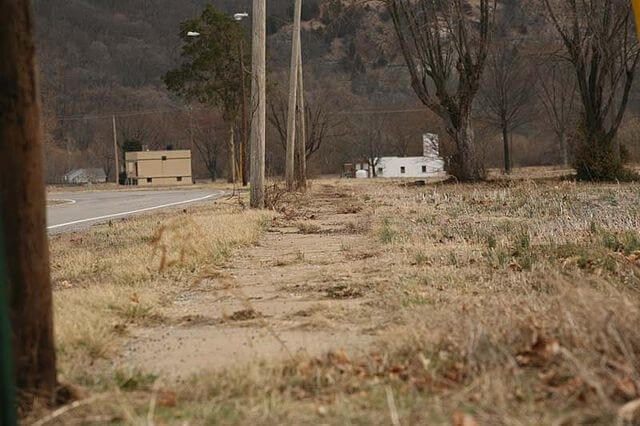
Valmeyer, a small village in Illinois, was once a thriving community.
However, a catastrophic flood in 1993 changed everything.
The Mississippi River overflowed its banks and submerged the entire town under several feet of water.
That destruction was so severe that the residents were forced to abandon their homes.
After the catastrophic flood, government officials made the decision to relocate the entire town to higher ground due to frequent flooding in the area.
Today, Valmeyer is a ghost town with only a few remnants of its former existence.
The abandoned buildings and homes still stand as reminders of what used to be a thriving community.
It’s eerie walking through what feels like an urban graveyard with empty streets and dilapidated structures lining both sides.
The town serves as a reminder of how natural disasters can completely change the course of human lives and history.
Location: Monroe County, Illinois, United States
7. Wanborough (Reliance on Farming)
Wanborough, a small town in Illinois, was once a bustling community with a population of over 500 residents.
This town had two taverns, a grist mill, two stores, a pottery, a blacksmith, and one of the state’s first breweries.
The history of this forgotten town dates back to 1818 when it was first established by early English settlers.
But it didn’t last long; by 1840, the town had all but disappeared.
However, today it stands as an abandoned ghost town frozen in time.
One of the main reasons for Wanborough’s downfall was due to its reliance on farming and agriculture.
The lack of modern equipment made it difficult for farmers to compete with larger farms in neighboring towns.
As a result, many residents left in search of better-paying jobs elsewhere.
Location: Edwards County, Illinois, United States
Also see our article on Wineries in Illinois.
Ghost Towns in Western Illinois
1. Appleton (Great Depression Demise)
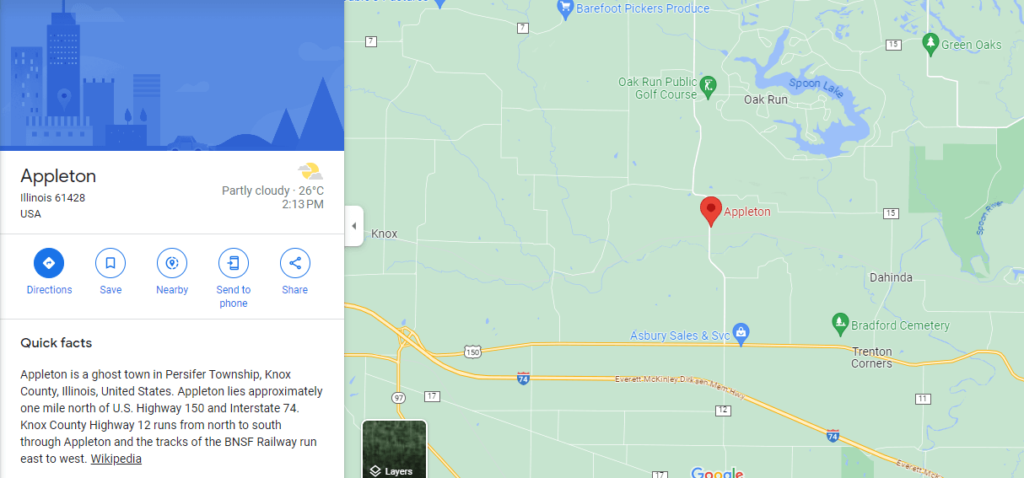
The streets of Appleton, once filled with the laughter of children and the chatter of adults, are silent now.
There are no more cars driving down Main Street or shop windows to peek into.
What happened to this once-thriving community?
Some say it was the Great Depression that brought about its demise.
Others claim it was a natural disaster that wiped out most of the population.
Regardless of what happened, one thing is certain: Appleton is now nothing more than a ghost town.
Driving through Appleton these days is like taking a trip back in time.
The streets are eerily quiet, and most buildings lie abandoned or partially destroyed.
Once-bustling shops and restaurants now stand as empty shells, their windows boarded up against the elements.
It’s hard to imagine that this desolate place was once home to hundreds of families who lived and worked here for generations.
Location: Knox County, Illinois, United States
2. Griggsville Landing (Bustling Riverport & Decline)

Griggsville Landing is a ghost town in Pike County, Illinois, steeped in history and mystery.
The town was once a bustling riverport on the Illinois River that was home to a thriving community of farmers, merchants, and riverboat workers.
However, the town gradually declined during the mid-19th century due to changes in transportation routes and the advent of railroads.
Today, Griggsville Landing is nothing more than an abandoned collection of homes and businesses that serve as a haunting reminder of its past glory.
Visitors can explore the remains of old buildings such as the Beatty House Hotel and General Store or wander through overgrown fields where crops were once grown.
The town’s old cemetery also offers an intriguing insight into life here during its heyday.
Despite being deserted for over 100 years, Griggsville Landing continues to capture people’s imaginations.
Location: Pike County, Illinois, United States
3. White Oak Springs (Scattered Ruins & Dilapidated Buildings)
Nestled amidst the rolling hills of Illinois, White Oak Springs was once a bustling town filled with life and vigor.
But today, the town is nothing but a ghostly shadow of its former self – abandoned and forgotten by everyone except for the occasional curious visitor.
The history of White Oak Springs dates back to the early 1800s when it was founded as a farming community.
Over time, it grew into a prosperous town with thriving businesses and a close-knit community.
However, over the years, major changes in transportation routes led to fewer people passing through town and ultimately spelled doom for White Oak Springs.
Besides, the lack of economic opportunities forced families to leave in search of better prospects elsewhere.
All that remains of this once-vibrant community are scattered ruins and dilapidated buildings that remind its past glory.
Location: Brown County, Illinois, United States
Also see our article on Planetariums in Illinois.
Ghost Towns in Eastern Illinois
1. Crawfordsville (Founded 1830s Water Mill)
Crawfordsville Landing is a small, forgotten town located in Crawford County, Illinois.
Edward Allison built a water mill here in about 1830, which is the first record of this place.
Allison sold the land to a man named Kiger, who then sold it to H Martin, whose father came to the county in 1811.
Crawfordsville was about the same distance (2.5 miles) north of Birds as it was south of Flat Rock.
Both sides of the townsite are located on the boundary between Honey Creek Township and Montgomery Township.
The town was once a bustling port on the Illinois River during the 19th century.
Today, all that remains are a few derelict buildings and abandoned docks along the riverbank.
Despite its decrepit state, Crawfordsville Landing still holds a certain allure for history buffs and urban explorers.
Location: Crawford County, Illinois, United States
2. Oxford (Dwindling Population Impact)
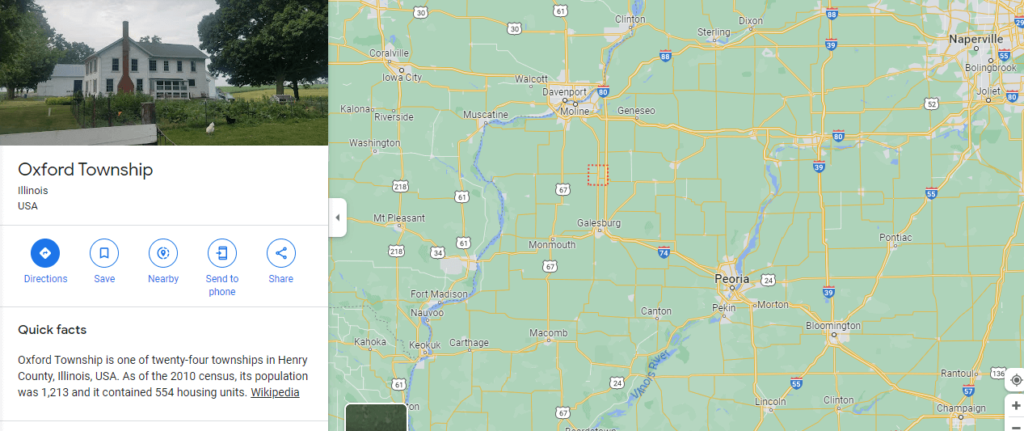
Oxford is a small town that has been gradually losing its population over the years.
Once a bustling and vibrant community, the town now resembles a ghost town with empty streets and abandoned buildings.
The dwindling population has impacted the local economy as businesses close down due to a lack of customers.
Oxford’s Situation is not different, as many small towns across America are facing similar challenges.
The younger generation is leaving for better opportunities in bigger cities, leaving behind an aging population that finds it difficult to keep up with modern times.
This has also led to a decline in infrastructure, with roads and buildings falling into disrepair.
Despite these challenges, some residents of Oxford remain optimistic about their town’s future.
They believe that by coming together and working towards revitalizing their community, they can bring back the glory days of Oxford once again.
Location: Henry County, Illinois, United States
If you liked this article, you may also like to read about the best Aquariums, Waterfalls, and Bed and Breakfasts in Illinois.
Looking beyond Illinois? Check out our article on the ghost towns of Texas and California.
